Cerne Abbas Giant: Snails show chalk hill figure 'not prehistoric'
- Published
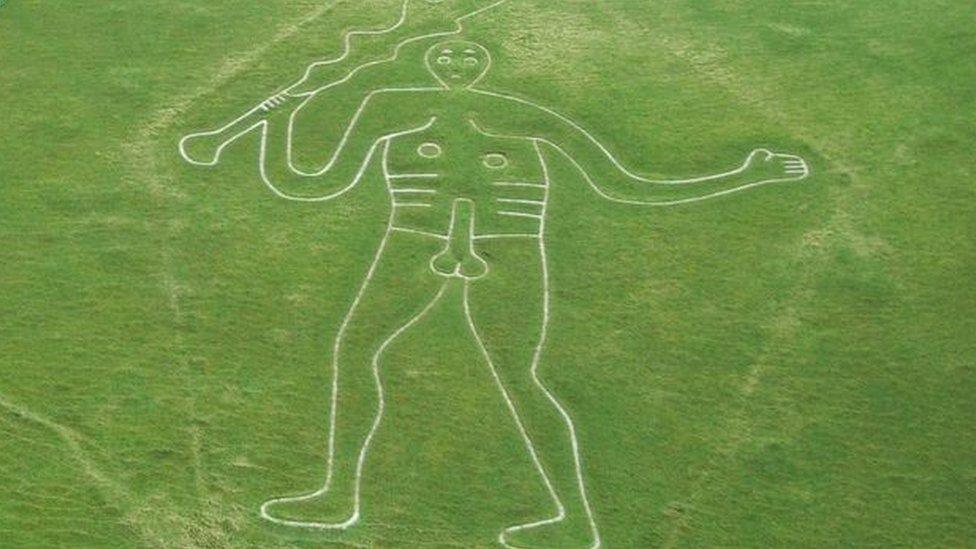
The earliest recorded mention of the Cerne Abbas Giant was in 1694
Snails have shown an ancient naked figure sculpted into a chalk hillside is unlikely to be prehistoric as hoped, archaeologists have said.
Tests of soil samples extracted from Dorset's Cerne Abbas Giant to determine its exact age have been delayed by the coronavirus epidemic.
They are not due until later in the year.
However, land snail shells found in the samples suggest it may date to medieval times, separate tests have found.

Snails introduced during medieval times, including Cernuella virgata (pictured), have been found at the site
The National Trust project, in which soil was taken from the giant's elbows and feet, was carried out to celebrate its 100-year ownership of the site.
Martin Papworth, senior archaeologist at the National Trust, and environmental archaeologist Mike Allen said two species of snail that appeared for the first time in Britain in the Roman period - thought to have been brought over from France as food - were not found at the site.
However, microscopic species, found for the first time in the medieval period during the 13th and 14th Centuries, have been discovered in the samples.
"They arrived here accidentally, probably in straw and hay used as packing for goods from the continent," Mr Allen said.
"Sadly, this shows the giant is unlikely to be prehistoric or Roman, and more likely dates to medieval times or later."

Soil samples were taken from the giant's elbows and feet
The earliest recorded mention of the Cerne Abbas Giant, which was gifted to the National Trust in 1920 by the Pitt-Rivers family, was in 1694.
Local folklore has long held the 180ft (55m) chalk man to be a fertility aid.
Early antiquarians linked the giant with the Anglo-Saxon deity Helis, others have said he is the classical hero Hercules, while some believe he was carved during the English Civil War as a parody of Oliver Cromwell.
A further layer of mystery was revealed in the 1980s when a survey showed anomalies that suggested he originally wore a cloak and stood over a disembodied head.
There has also been a suggestion his significant anatomy is in fact the result of merging a smaller penis with a representation of his navel during a re-cut by the Victorians.
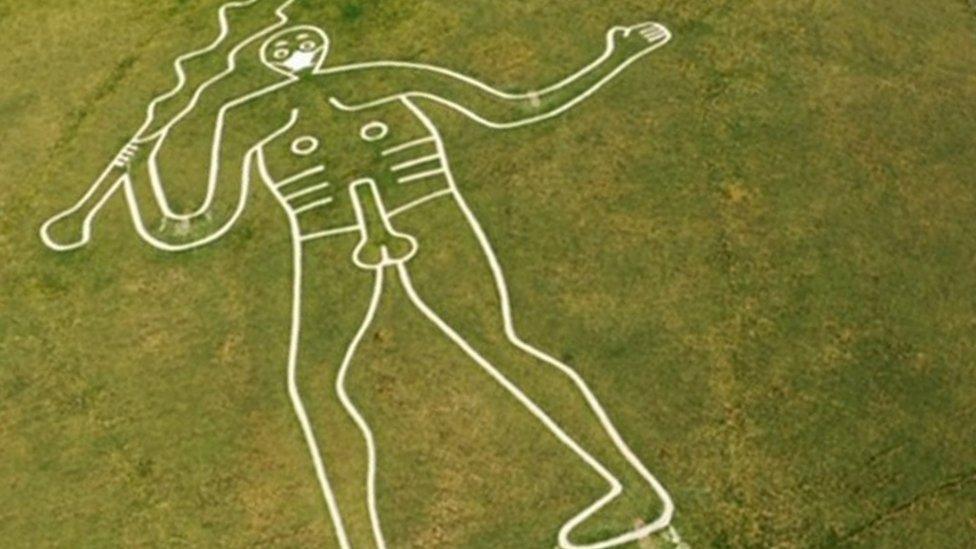
The figure has been unofficially altered several times before, most recently during the coronavirus pandemic when it was given a mask
Mr Allen said snail shell testing had also shown the vegetation at the site had changed over time.
"There was a period when the giant was grown over with grass and other vegetation, and disappeared," he said.
"This suggests some people weren't bothered about the giant or felt he was too rude so left him.
"However, during the Victorian period - a time thought of as the most prim and proper - he was there in all his glory."
He said it was hoped funding could be secured for further snail shell testing.
However, the soil tests, using a technique called optically stimulated luminescence (OSL), are due in the autumn.
They would give a more accurate age of the giant as they would "determine when mineral grains in soil were last exposed to sunlight", Mr Papworth previously said.
- Published25 April 2020
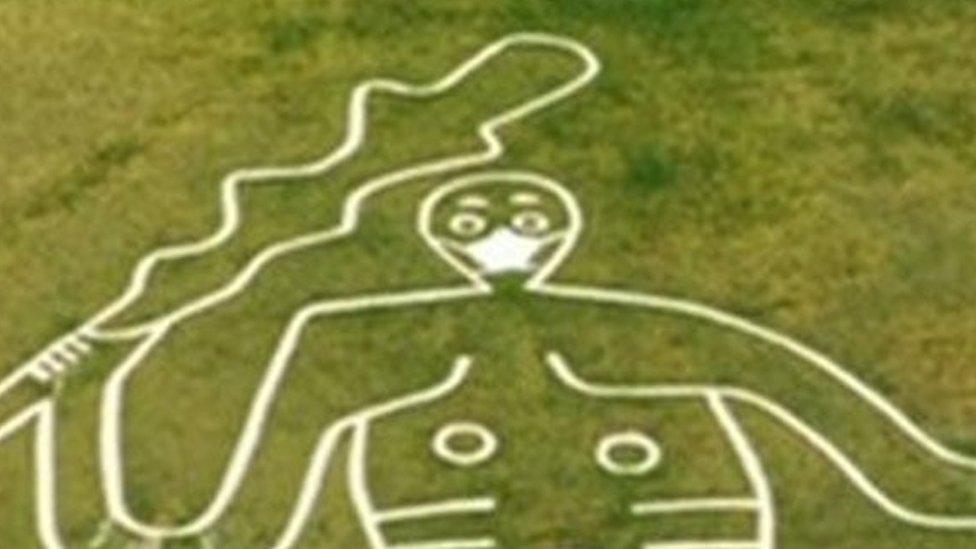
- Published23 March 2020
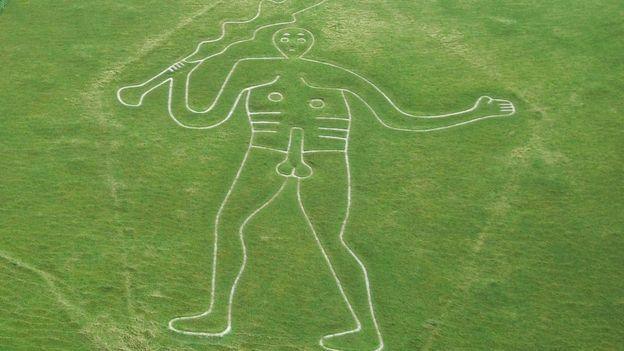
- Published29 August 2019
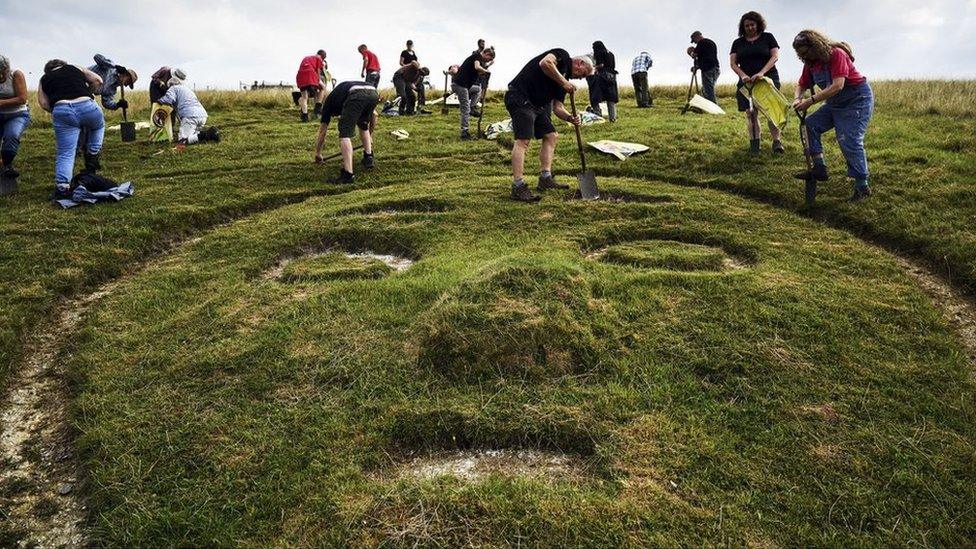
- Published24 June 2017
